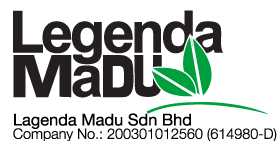Back to Nature: Economic and Environmental Concerns
- Published in
- Written by Administrator
- Category: General Articles
- Hits: 7121
- Print , Email
Back to Nature
Interest in organic farming took a great leap forward in the early 20th century, due in part to the work of prominent advocates such as Sir Albert Howard, Lady Eve Balfour, J.I. Rodale and the like. But the decade following would change all that.
During and following the years after World War II, there was an explosion in scientific discoveries and technological breakthroughs. Farming too took a decidedly scientific turn. Not only in the way we harvested with more efficient machines but also the way in which we manipulated the soil and growing process. The use of chemical fertilizers and pesticides became widespread as they were easy and cheap to bulk-manufacture.
It is only in more recent times that organic farming has gained popularity once more. Many different factors have contributed to this renaissance.
Economic And Environmental Concerns
On the supply side, space has become a premium, including farmlands. There is a realization that what little is left needs to be preserved in pristine health so that crop yield can be maintained. Mounting evidence has shown that conventional farms, most of which use chemical fertilizers and pesticides, degrade the soil and impact negatively upon the environment. This happens because in conventional farming, we take nutrients out of the soil continuously and the soil is unable to regenerate the way nature intended it to. This disrupts the natural cycle and the inter-relationships between the soil, plant life and animal life.
In a January 2001 BBC report titled Organic Farming Helps Threatened Species, the UK Environment Minister Michael Meacher cited farming methods as “one of the most important influences on wildlife in the country” and that “farming accelerates soil erosion, which results in the conversion of pasture to arable land, leads to over-grazing and damages precious aquatic habitats. More than 100 plant species have become extinct this last century and 95 percent of meadows have been lost.”
The report also provided results from various plant studies. In a survey of 92 plant species examined over four years, 30 were found to be more common on organic farms, compared to only four found in high numbers on conventional farms. Most tellingly, indigenous wildflowers, such as the buttercup, were found to exist only on organic farms. Earthworms, birds and spiders were also more abundant on such farms. There was also a revival in the numbers of threatened species such as skylarks, song thrushes and swallows in farms that had converted to organic farming methods,.
The consequences arising from scarcity of land also includes ever-escalating landfill costs. This makes composting once again an attractive and economically-viable alternative. Meanwhile, improvements in composting processes have also resulted in the production of better quality, mature compost at a reasonable cost.
On the demand-side of things, there has been a resurgence in general public sentiment for a need to return to ‘basics;’ which involves a simpler, more natural way of life. There have been numerous food scares involving the harmful effects of chemical pesticides in the food chain and on the environment. There is also growing suspicion about genetically-modified crops and health implications associated with them. All these have contributed significantly to a general suspicion of all forms of ‘scientific tampering’ with nature.
Consumers have increasingly become more aware of the benefits of organic produce. This has fuelled demand, which in turn has led to a higher premium on organic produce over conventional farm produce. Where there’s profits to be made, you can be sure that enterprising farmers will soon follow. But as with all business enterprises, the costs of investing in large-scale organic farming methods has to be balanced against the returns. And here’s where the science of composting becomes essential: how to manipulate the natural process to yield required results at optimum levels. So let’s go back to basics for a primer before we delve deeper into the processes and controls involved.


